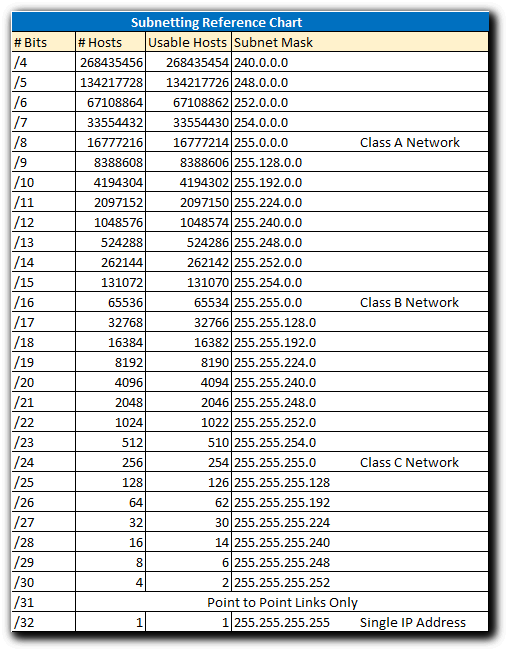
Thus, devices rely on subnet masks to provide the necessary information to communicate with other devices on the same or outside networks. Moreover, when a device on a network observes the network and host bits on another device’s IP address, it can determine whether the other device is on the same home/business network or online on another network. In simple words, One can connect up to 254 internet-enabled devices such as phones, computers, IoT gadgets, and others to the home network to access the internet. This implies using 254 usable IP addresses within the defined network. For example, a household home network has a standard subnet mask of 255.255.255.0. With minor adjustments in the subnet mask, you can assign the available IP addresses within a network. Subnet masks are vital to the process of subnetting. One can represent the IP address and subnet mask as: The subnet mask for the IP network above: In such IP addresses, the network and host portions become indistinguishable without the subnet mask. The number in each octet ranges from 0 to 255. Here, the IP address (IPv4) refers to a 32-bit numeric address that has four numbers separated by periods, and each group of numbers within a block is referred to as an octet. When a new device connects to a network, an IP address is assigned to. Such network subdivision allows better usage of IPv4 addresses and makes the network’s data routing more secure and efficient. Subnetting is a process that logically partitions an IP network into multiple subnets. As such, the data packet is eventually delivered to the destination IP address of 192.0.4.16. On determining the target subnet, it sends the packet to the router that is responsible for delivering data packets within that very subnet. It uses the data packet’s subnet mask of 255.255.255.0 to perform some binary mathematics, observe the device address ‘16’, and thereby calculate which subnet it should forward the data packet to. Upon arrival at the right network, the router within the network then consults the routing table for forwarding the packet further. Thus, the network routers deliver the data packet to the network identified by 192.0.4. Since the IP address is split into a network and host address, here, in a class C network, the network portion is represented by ‘192.0.4’. A data packet addresses the IP address 192.0.4.16, representing a class C network. Without this initial sorting, the administrative team would have to invest more time in looking for the exact location of Tom’s desk, which could have been in any corner of the enterprise building. Since the letter was matched to Tom’s department in the initial stages, Davis’s mail was quickly sorted into a group of potential recipients. In the above example, Tom represents an IP address while the HR department serves as a subnet mask. The HR department then hands the letter over to Tom. As a result, the letter is sent to the HR department instead of Tom. On receiving Davis’s letter, the team identifies that Tom works in the HR department.

The administrative team at Tom’s office sorts the mail by department rather than by employee name to ensure that the correspondence isn’t missed and there is no confusion in the process. Tom’s place of employment is a large enterprise with several co-located departments. Davis sends this letter to Tom’s office rather than his residence. Suppose a user named ‘Davis’ writes a letter to his friend ‘Tom’.

Let’s consider an analogy to understand the subnet mask concept better.

However, the routers match this destination IP address to the data packet’s subnet mask to deliver the data packet to the right place. Data packets that traverse over the internet or any network do not indicate the subnet mask but only reveal the IP address of the destination. Routing devices or switches rely on subnet masks to route data packets to suitable destinations. Technically, subnet masks are used internally within a network. It encapsulates a range of IP addresses that a subnet can use, wherein the subnet refers to a smaller network within a more extensive network. A subnet mask is a 32-bit address that segregates an IP address into network bits that identify the network and host bits that identify the host device operating on that network.


 0 kommentar(er)
0 kommentar(er)
